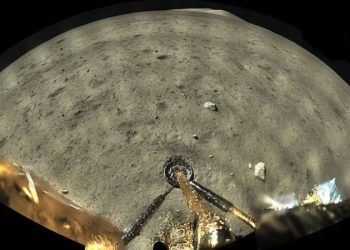Plenty of discoveries have revealed incredible details about the industrial life in ancient Egypt. We wrote about the oldest industrial brewery in the world. Now, a team of archaeologists has restored the Egyptian technology of smelting copper, evidence for which has been found at only one ancient site.
Archaeologists conducted several studies and experiments on ancient metallurgical technologies. During one, they were able to restore the Egyptian technology of smelting copper which was used over 4,000 years ago.
They came to the conclusion that raw acacia wood and donkey manure, which was responsible for thermoregulation, was used as fuel for stoves in conditions of its shortage in the desert. This combination produced excellent similarities between the experimental results and the archaeological evidence.
The Ain Sokhna site, located at the northern end of the Gulf of Suez, played an important role in the supply of copper to the Nile Valley during the Ancient (c. 2649-2152 BC) and Middle (c. 2040-1783 BC) kingdoms. To date, about 80 furnaces have been excavated here, dating back to the early Middle Kingdom (about four thousand years ago).
They show a high level of standardization in Egyptian copper smelting technology. Moreover, it is the only fully documented example of the early metallurgy of Egypt from this period. In the early Middle Kingdom, copper ore was obtained in southern Sinai and then delivered to Ain-Sokhna on ships for processing.
However, a large number of smelting furnaces required a large amount of wood, which forced the Egyptians to look for optimal technologies, taking into account the lack of forest in the desert.

Georges Verly, from the Royal Belgian Museum of Art and History, together with scientists from France and the Netherlands, conducted a large-scale experiment to reconstruct furnaces and smelting technologies used in Ain Sokhna.
The authors managed to obtain exactly the same materials for the construction of the furnace and its lining, which were available on the coast of the Red Sea in Ancient Egypt. Copper ore corresponded in its characteristics to the Sinai samples. However, the researchers had to establish what kind of fuel the Egyptians used for the smelting technology.
According to scientists, in ancient times there were two suitable types of fuel – raw wood and charcoal (in Egypt, mainly from acacia). Raw wood had the advantage of requiring less manipulation before use and wasted less. In addition, the available fuel was donkey manure, which was actively used for pack transport. Archaeologists have indicated that dry donkey manure was used in cooking.
They suggested that it could be taken raw for copper smelting, as this would reduce the consumption of wood or coal, as well as control the temperature of the furnace column (on average, it should not exceed 900 degrees Celsius).
After the experiment, which, according to scientists, lasted 1,500 hours, they came to conclusions based on data on the state of the lining and slag, as well as the quality of the resulting copper. Raw wood is well suited for smelting copper ore as it heats the column at lower temperatures, allowing the furnaces to be reused.
The combination of raw wood and donkey manure, which allows for regulating and distributing the temperature inside the kiln, resulted in the best similarity between the experimental results and the corresponding archaeological data.
Such a combination, according to scientists, was most likely used in Ain-Sokhna of the early Middle Kingdom. The use of charcoal, as well as smelting without manure, led to unsuitable results.
Join the discussion and participate in awesome giveaways in our mobile Telegram group. Join Curiosmos on Telegram Today. t.me/Curiosmos
Sources:
• Brosnan, J., Tine, S., Guyer, B., Odler, M., Dare, T., & Jeong, S. (n.d.). Ancient Egyptian Metallurgy.
• Rademakers, F., Verly, G., Somaglino, C., & Degryse, P. (2020, September 02). Geochemical changes during Egyptian COPPER Smelting? An experimental approach to the AYN SOUKHNA process and broader implications for archaeometallurgy.
• Tallet, P., & Mahfouz, E. (n.d.). The Red Sea in Pharaonic Times [PDF].
• Verly, G., Rademakers, F., Somaglino, C., Tallet, P., Delvaux, L., & Degryse, P. (2021, March 24). The Chaîne Opératoire of Middle Kingdom smelting batteries and the problem of fuel: EXCAVATION, experimental and analytical studies on ancient egyptian metallurgy.











